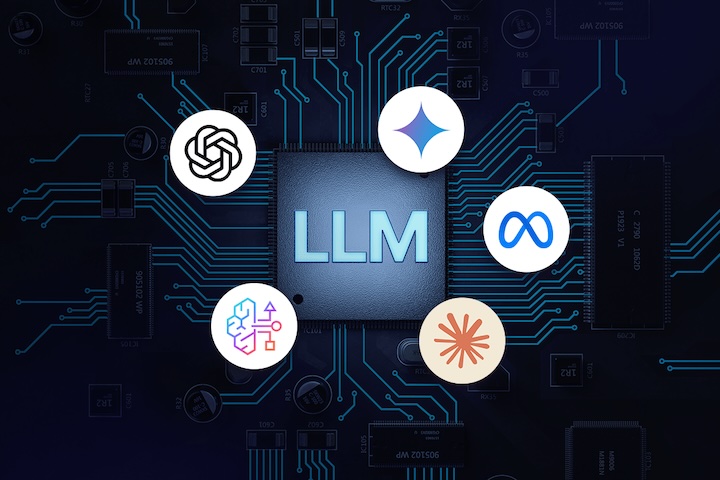
AI Model Pricing Deep Dive: A Technical Analysis of OpenAI, Anthropic, Mistral, and DeepSeek
The rapid evolution of large language models has created a competitive landscape where pricing structures vary significantly across providers. This analysis examines the cost architectures of leading AI platforms, focusing on token-based pricing, performance trade-offs, and optimal use cases.
OpenAI's Pricing Structure and Technical Considerations
OpenAI maintains a tiered pricing model that reflects computational intensity. The GPT-4o architecture demonstrates this clearly, with input processing at 2.50 per million tokens and output generation at 10.00 per million tokens. This 4:1 input-output cost ratio suggests significant computational overhead in generation tasks, likely due to the model's 128K context window and advanced reasoning capabilities.
The GPT-3.5-turbo model presents an interesting case study in cost-performance optimisation. At
0.50/0.50/1.50 per million tokens for input/output respectively, it offers approximately 80% of GPT-4's capability at 20% of the cost, making it ideal for high-volume, lower-stakes applications. The 16K token context window limitation, however, creates trade-offs for complex document analysis.
Anthropic's Cache-Optimised Architecture
Anthropic introduces a novel caching mechanism that significantly impacts pricing dynamics. The Claude Opus 4 model demonstrates extreme variance, from 1.50 per million tokens for cache hits to 75.00 for output generation. This architecture suggests Anthropic has optimised for repetitive queries within enterprise environments, where cached responses can dramatically reduce costs.
The Claude Haiku 3.5 model presents an intriguing middle ground. At 0.80 / 0.80 / 4.00 per million tokens, it undercuts GPT-3.5-turbo on input processing while maintaining comparable output costs. Technical documentation suggests this model uses a modified transformer architecture with selective attention mechanisms to achieve this efficiency.
Mistral's Disruptive Pricing Model
Mistral's pricing strategy challenges industry norms, particularly with its Mistral Small 3.2 model at 0.10 / 0.10 / 0.30 per million tokens. This positions Mistral as the cost leader, though benchmarks indicate approximately 15-20% lower accuracy on complex reasoning tasks compared to similarly priced competitors. The Magistral Medium model shows an interesting inflection point at 2 / 2 / 5 per million tokens, suggesting Mistral has identified a specific performance threshold where costs increase exponentially.
DeepSeek's Time-Based Pricing Innovation
DeepSeek introduces a novel temporal pricing dimension with its 50-75% discount during off-peak hours (UTC 16:30-00:30). The DeepSeek-Chat model drops from 0.27/0.27/1.10 to 0.135/0.135/0.55 per million tokens during these periods. This suggests sophisticated load balancing capabilities and potentially underutilized Asian data center capacity during European/American nighttime hours.
The DeepSeek-Reasoner model warrants special attention. Despite its 64K context window and enhanced reasoning capabilities, its off-peak pricing matches DeepSeek-Chat's discounted rates, indicating possible architectural similarities or shared infrastructure.
Technical Cost-Benefit Analysis
Input/output cost ratios reveal fundamental architectural differences. OpenAI maintains a consistent 1:4 ratio across models, while Anthropic's ratios vary from 1:5 (Haiku) to 1:5.7 (Opus). Mistral shows the most variance, from 1:3 (Small) to 1:3.3 (Large), suggesting different optimisation strategies per model class.
Memory efficiency emerges as a key differentiator. Models with larger context windows (GPT-4o's 128K vs Mistral Small's 32K) command premium pricing, reflecting the quadratic attention costs in transformer architectures.
Strategic Recommendations for Deployment
For high-volume preprocessing tasks, Mistral Small's $0.10 input cost is unbeatable, though with accuracy trade-offs. Batch processing during DeepSeek's off-peak windows offers 50-75% savings for non-time-sensitive operations.
Anthropic's cache system presents unique opportunities for applications with repetitive queries, where cached responses at $1.50 per million tokens could reduce costs by 90% compared to full processing.
OpenAI remains the benchmark for cutting-edge capabilities, but the 4:1 input-output ratio suggests careful prompt engineering is essential to control costs. The GPT-3.5-turbo model offers surprising value for applications that can tolerate its limitations.
Emerging Trends and Future Outlook
The market is bifurcating into ultra-low-cost options (Mistral Small) and premium capabilities (GPT-4o, Claude Opus). DeepSeek's temporal pricing may inspire similar innovations from competitors, potentially leading to spot pricing markets for AI inference.
Cache-aware architectures like Anthropic's could become standard as providers seek to optimize infrastructure utilisation. However, the significant variance in input-output cost ratios suggests no consensus yet on the true computational cost balance between processing and generation.
For users selecting a provider, key considerations include:
- Budget constraints (Mistral for lowest cost)
- Need for advanced capabilities (GPT-4o or Claude Opus)
- Ability to schedule processing during off-peak hours (DeepSeek)
- Frequency of repetitive queries (benefiting from Anthropic's cache)
- Specific model strengths for particular use cases
As model architectures evolve, we may see further specialisation in pricing models, with separate rates for different types of operations (retrieval vs generation vs reasoning). The current flat token-based pricing may prove too simplistic as models incorporate more heterogeneous components.
United Kingdom | Technology, AI, LLM, ML | | slashnews.co.uk